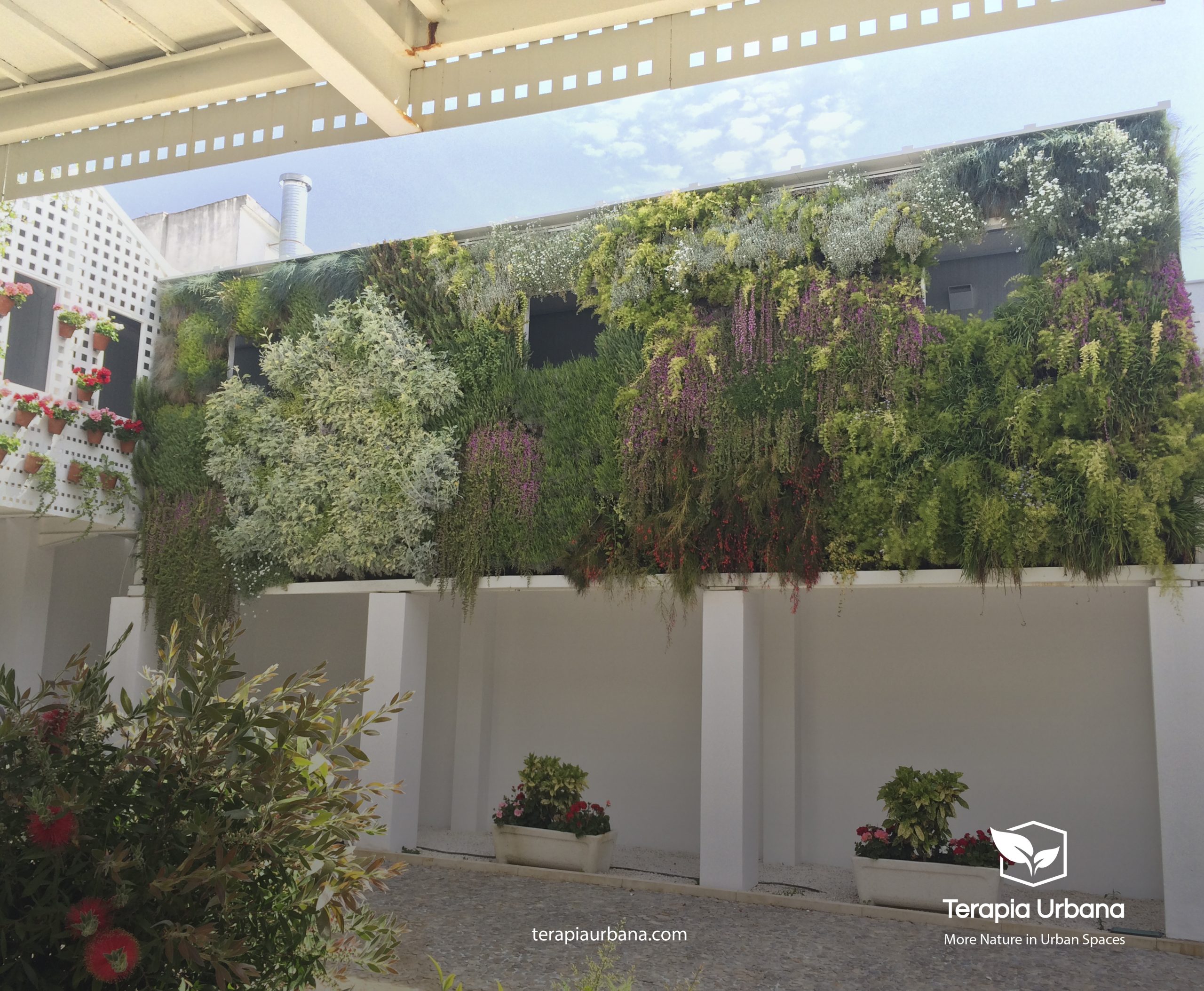As cities grow and the population in urban downtown increases every year, the area occupied by nature becomes limited. Green spaces are finding it increasingly difficult to recover the space they once occupied, maintaining a constant pulse in a jungle of concrete, steel and glass.
This reduction of green spaces in urban environments causes numerous environmental and air quality problems, and contributes to the rise in temperature in the city, making oxygen and clean air more and more precious.
Are you an architect or engineer and want to incorporate a vertical garden in your project? We can help you!
What are the advantages of incorporating a vertical garden in our project?
Vertical gardening allows us to take advantage of the potential of vertical surfaces, spaces that are impossible for traditional gardening to occupy. These systems make it possible to introduce a wide variety of species into cities and increase biodiversity, providing numerous benefits for buildings and people.
This support for biodiversity is essential to ensure biological and botanical balance, and is a key strategy to ensure the development of sustainable cities of the future.
Also, noise pollution, which is a major problem in cities, is clearly reduced by the buffering effect of vertical plantings.
Specifically this vertical arrangement that cancels out the rebound effect of sound, which turns some streets into real amplifiers, significantly improving acoustic quality.
Numerous studies have shown that exposing the roots to polluted air, thanks to the bacteria associated with the rhizosphere, allows vegetation to capture many of the most dangerous pollutants in urban air, such as volatile organic compounds (VOCs).
Especially in vertical landscaping, a better direct contact of the roots with the air environment is favoured.
We are responsible for preserving the balance between species, and for achieving cities with green urban infrastructures that improve people’s quality of life. Their correct design is our responsibility, especially as professionals in charge of urban design.
What selection of plants should I make according to the construction I am planning?
One of the key aspects to be able to design a successful vertical garden is to make a correct selection of species. To do this, it is necessary to carry out a detailed study of the lighting conditions, both outdoors (sunlight study) and indoors (lighting study). It is also essential to analyse the microclimatic conditions of the environment, as well as the water and nutritional requirements and even the way in which each species develops.
In particular, the plants selected must satisfy criteria of resistance to humidity, have roots that allow adequate mechanical fixation, as well as numerous factors that have a direct impact on subsequent development.
Based on the analysis of the sunlight data and the particular conditions of each installation, such as the climate zone, exposure to wind, water quality, etc., our technical office carries out the landscape design for each vertical garden.
With this analysis of multiple parameters, we carry out the final development of the landscape proposal, aligning the design with the compositional and aesthetic objectives of each vertical garden project.
Our team of experts accompanies you throughout the design process, analyzing the viability of each vertical garden installation, and developing sustainable and long-lasting projects, adapted to the particular conditions of each case.
Discover our landscape consultancy service and contact us, so that we can help you to materialise your idea and offer the solution that best suits the needs of your project.
An example of plant façades with a wide variety of plants is the one we carried out in the courtyard of the old Bodegas Mora, in Lucena (Cordoba, Spain), and to which we dedicated an interesting post some time ago in our blog.

